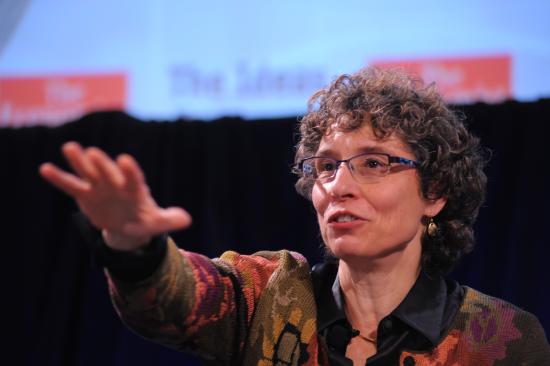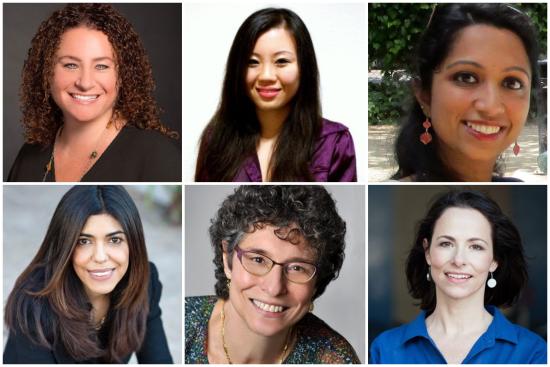By AnnaLee Saxenian
I was part of the second class of undergraduate women at Williams College, which became co-educational in 1970 after nearly 200 years of being an all-male enclave — and for many of those years, all-white as well.
I became accustomed to being one of the only women in a classroom. I didn’t have a single woman professor, and there were also no women administrators at that time. In large part because I was one of very few women on the campus, I tended to be quiet.
It was only after I came to UC Berkeley for graduate school, and grew in age and confidence, that I began to develop a voice. When I became dean of the School of Information in 2004, there was only one other female dean on campus. Now we have more women in senior leadership positions, and even a woman as chancellor, but we are still a minority.
I’ve watched younger generations of women struggle with the same things I grappled with early on — such as not having the confidence to push to the head of the room, or to speak up when the men speak up or claim credit for their ideas.
Even at the liberal bastion that is Berkeley, we battle a lot of implicit bias. People believe they are open-minded, but when they see a woman, let alone an underrepresented minority woman, speak they all-too-often discount what she is saying.
At the I School, we are keenly aware of our responsibility to educate and prepare women and other underrepresented groups to go forward to work in the tech world, where an entrenched culture of sexism and gender discrimination is no secret.
We hear often from our students about their discomfort with that status quo — and with the discouraging data reflecting a lack of representation of women and other minority groups in these spaces.
As leaders of a school that graduates professional master’s students who will take their places as data scientists, user-experience designers, product managers and more, we need to fearlessly stake out a path to overdue change by educating a diverse array of students and providing them with a pipeline into a more diverse tech industry.
One way we are doing just that is by working to align the population of the I School more closely with the population of California — the goal of an initiative we’ve undertaken this year to support and increase diversity at the School. We launched a Python (high-level programming language) bridge course in our Master of Information and Data Science program, which facilitates entry for many women interested in data science who lack the coding skills required of the program. This increased the enrollment of women in the program from 10 percent to 30 percent. Our Master of Information Management and Systems program has consistently had a 50-50 gender split for many years, and during our most recent admission cycle we admitted 55 percent women.
We also strive to increase and support our female population by showcasing the talented women who are succeeding at the top of the tech world via our own school programming.
Across the industry, tech conferences have been called out for having few, if any, women speakers. And the women speakers that do make it to the lectern rarely deliver keynotes. While this deficiency has been spotlighted repeatedly in the media, corrections are slow-moving at best.
But honestly, it’s not hard to reach gender parity when assembling the lineup for large events or conferences. There are plenty of excellent, competent women who want to speak — although they may not be as quickly visible to conference organizers who rely on “established” speaker lists from what has been.
It’s our job, then, to seek out these women and ask them to present at our programs, such as our upcoming DataEDGE conference on April 24, where all aspects of data science will be covered by a roster of 13 speakers that features six women, including a keynote address by Fernanda Viégas, a senior staff research scientist at Google Brain and pioneer in data visualization.
Ultimately it required just a small reach, and carries a potentially huge ripple effect.
I began my journey in academia at a time when there were few women in leadership roles to serve as role models. When I was in college in the ’70s, I fully expected that by this point women would be equally represented in the academy. While there are more women leading schools and colleges now, we are still not well represented in the highest positions. We’ve made progress, but not as much as I expected, or as is merited.
If we showcase more women at events like DataEDGE, we provide role models to our students, we normalize women in leadership roles for our audiences, and we help fill the pipeline. One conference may not have a long-term impact, but if everybody does this, it will make a huge difference. The more we have gender parity on display, the more powerful we all will be.
Originally published on the Berkeley Blog.
AnnaLee "Anno" Saxenian is the dean of the School of Information.












